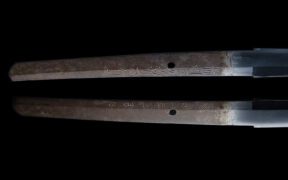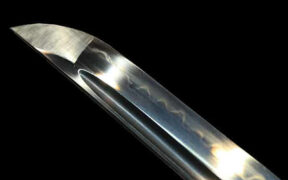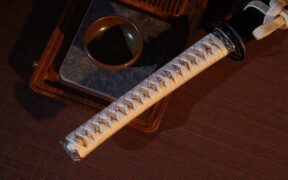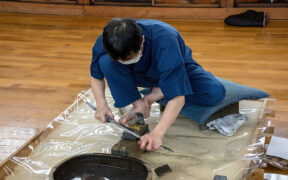Nakago: Examining the Tang of Japanese Swords
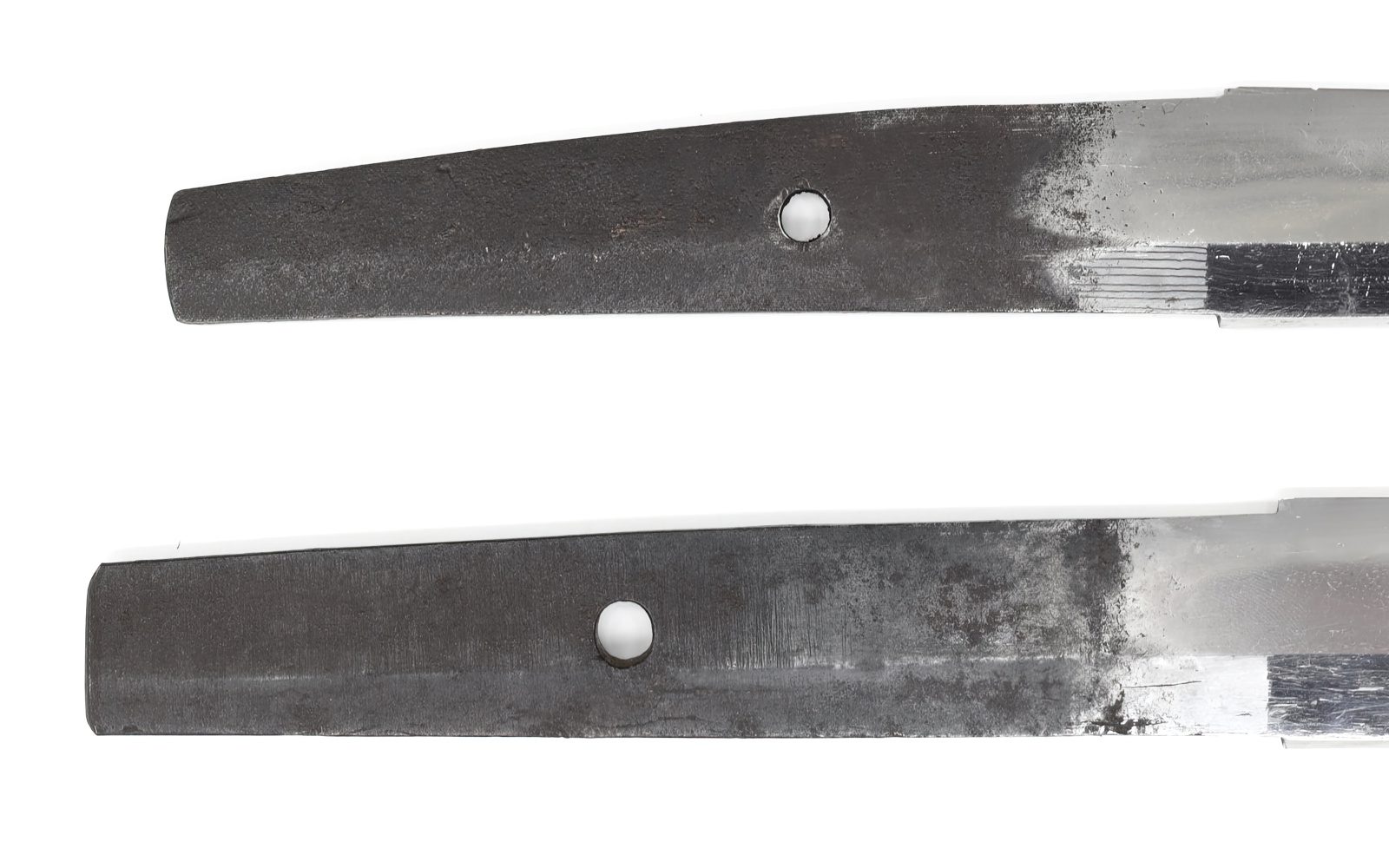
The nakago or tang of a Japanese sword is one of the most crucial elements examined in sword attribution. It is the only part of the blade that is not customarily polished, making it a true indicator of age. The color of the tang, along with rust, its shape, condition, and any inscription can help in dating and appraising the sword.
KEY TAKEAWAYS:
- The Japanese sword tang, known as nakago, plays a crucial role in determining a sword’s age and attribution. It has functional components such as the mekugi-ana (peg hole), which accommodates the mekugi (bamboo rivet) securing the tang in the hilt.
- The nakago also bears significant information, including the yasurime (file marks) and mei (signature), providing crucial details about the blade. Additionally, the diverse shapes of the nakago and its butt end, the nakagojiri, are associated with specific schools of production and historical periods.
- The nakago serves as a rich source of information in sword appraisal, unveiling various aspects of the sword’s history and craftsmanship.
Etymology of the Japanese Term Nakago
The term nakago (茎 or 中心) literally means stalk or stem, a reference to the tang of a Japanese sword. The Japanese term comes from a combination of the words naka (meaning inside the hilt) and komeru (meaning place or fit). These words form the term nakagomi, which later abbreviated to nakago. In old sources, the nakago is written with the character 茎, but by the Edo period, the writing 中心 became more common.
Anatomy: Parts and Features of the Nakago
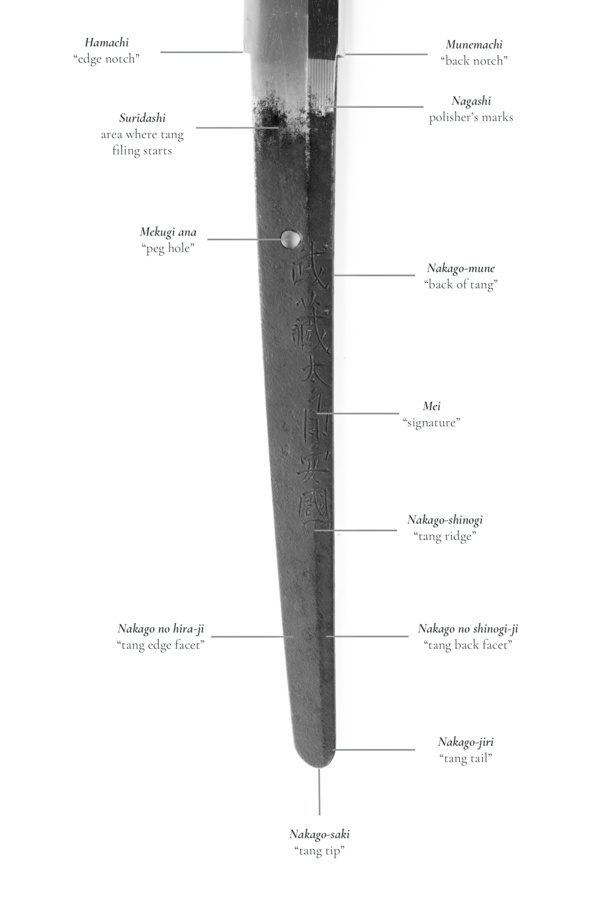
The nakago, the tang of the sword, is the unpolished part of the blade that goes inside the hilt (tsuka) when the sword is mounted. It is the part of the blade below the notches (machi), which divides the blade proper from the tang.
Here are the various parts of the Japanese sword tang and their functions:
- Hamachi (Edge Notch) – The hamachi is the notch at the top of the tang where the cutting edge begins.
- Munemachi (Back Notch) – The munemachi is the notch at the top of the tang on the back of the blade (mune) where the polished metal begins. It is on the opposite side of the hamachi.
- Nagashi (Polisher’s Marks) – The nagashi consists of parallel, bar code-like lines that provide information about who polished the blade. The term nagashi literally means runners.
- Suridashi (Area of Tang Filing): The suridashi is the area right under the habaki where the file marks (yasurime) start.
- Mekugi-ana (Peg Hole) – The mekugi-ana is the hole in the tang for the bamboo rivet (mekugi), used to secure the blade in the hilt. However, the shapes and arrangement of mekugi-ana varied in historical swords.
- Nakago-mune (Back of Tang) – Mune is a general term for the back of a blade, opposite the cutting edge. The nakago-mune specifically refers to the back of a tang. It can be flat or rounded.
- Mei (Signature) – The mei is the inscription on the tang of a sword. It usually includes the swordsmith’s name and other information. Blades bearing their original signature are called zaimei, meaning having a signature. Some blades have no signature and are called mumei.
- Yasurime (File Marks) – Before a signature (mei) is inscribed into the tang, it is finished with file marks. Yasurime varied with various swordsmiths, schools, and periods, serving as a kind of additional signature, and is examined carefully in sword appraisal. Both sides of the tang usually have the same style of filing.
- Nakago-shinogi (Tang Ridge) – Shinogi refers to the well-defined line or ridge running along the length of the blade, between the cutting edge and the back (mune). The nakago-shinogi specifically refers to the ridge on the tang.
- Nakago no hira-ji (Tang Edge Facet) – Hira-ji refers to the area between the shinogi and the hamon. It has a curved surface and the degree of curvature is called niku. The nakago no hira-ji specifically refers to the hira-ji surface of the tang.
- Nakago no shinogi-ji (Tang Back Facet) – Shinogi-ji refers to the area between the shinogi and the mune. The nakago no shinogi-ji specifically refers to the shinogi-ji of the tang.
- Nakagojiri (Tang Tail) – The nakagojiri is the butt end of the tang. Its shape is important in determining the school and province of the wordsmith.
- Nakago-saki (Tang Tip) – The nakago-saki is the very tip of a tang if it has an angular finish.
Different Types and Shapes of the Nakago

The tang of a Japanese sword varies in shape, depending on the school of production and the period it was forged. Most nakago have a standard, slightly tapered shape with a gentle curve, but there are several unique types.
1. Kijimomo-gata
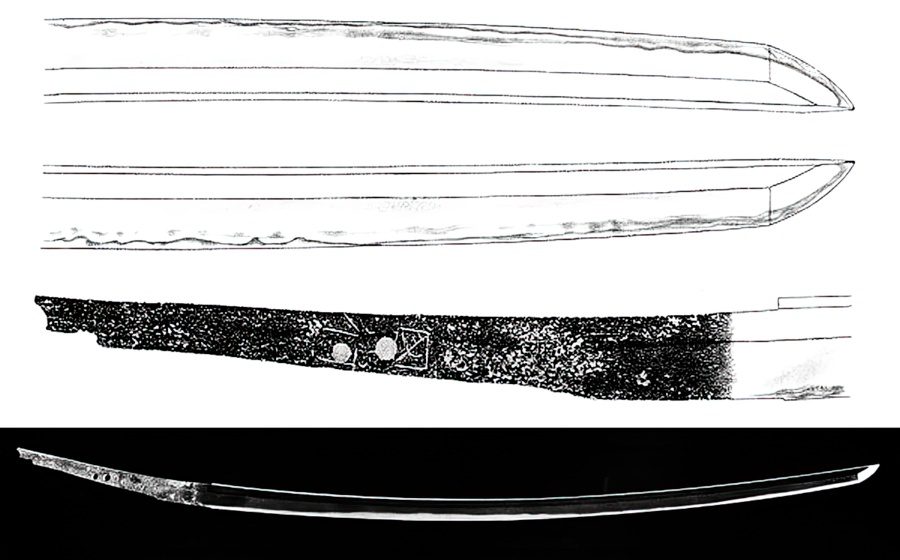
The term kijimomo literally means pheasant’s leg or thigh, a reference to this tang shape. It is characterized by a sudden narrowing on the edge side and remains narrow to the tip. Its shape allowed rivets to reinforce the old hilts. It is the oldest form of tang, often seen on tachi produced during the Heian and Kamakura periods.
2. Gohei-gata

The term gohei refers to the strips of paper attached to the sacred straw ropes often seen at Shinto shrines. The gohei-gata features an equal number of stepped notches on the tang. It was introduced by Shinto-era swordsmith Ise no Kami Kuniteru during the Edo period.
3. Sotoba-gata
The term sotoba is another word for stupa, the wooden grave markers seen in Buddhist cemeteries. The sotoba-gata is a tang shape resembling these grave markers turned upside-down. It has the same width from top to bottom and ends in a V-shape. It was mostly used by the Kongobyoe swordsmiths of Awa during the Muromachi period and Ise no Kami Kabayashi of Osaka.
Tang shapes mainly seen in tanto daggers:
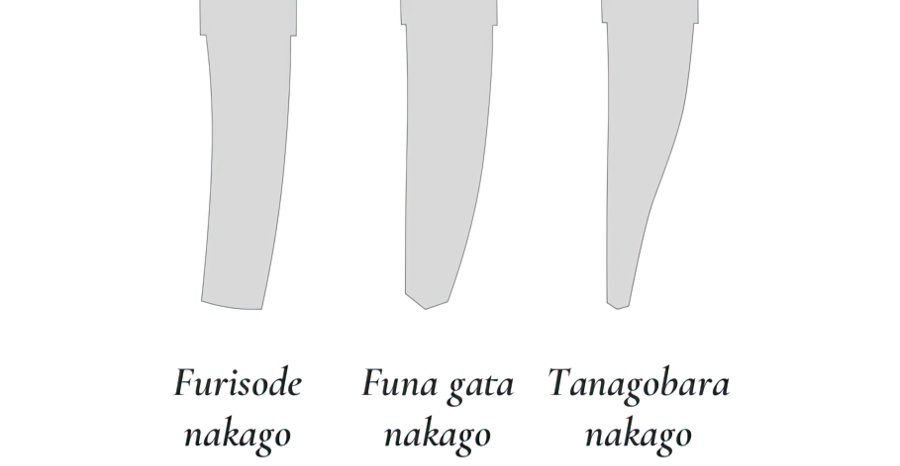
4. Furisode-gata
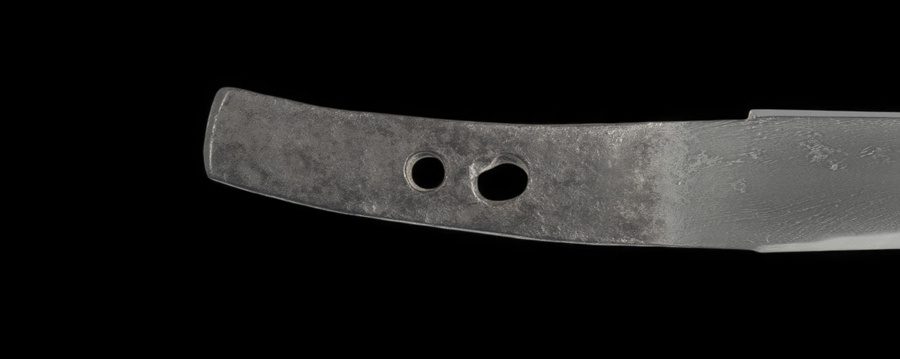
The term furisode refers to the long sleeves of a lady’s kimono, a reference to this tang shape. The furisode-gata features a shape similar to the draping of the sleeves and has a strong curvature. It was seen only on tanto produced during the Kamakura period by swordsmiths Awataguchi Yoshimitsu, Rai Kunitoshi, and Norishige.
5. Funa-gata

The term funa (or fune) literally means boat. The funa-gata resembles the profile of a Japanese fishing boat. It is short and stubby, and the line of the cutting edge is a deep outward bulge. This tang shape is associated with Masamune of Soshu and his school in the late Kamakura period, Sadamune, and Gō Yoshihiro.
6. Tanagobara-gata
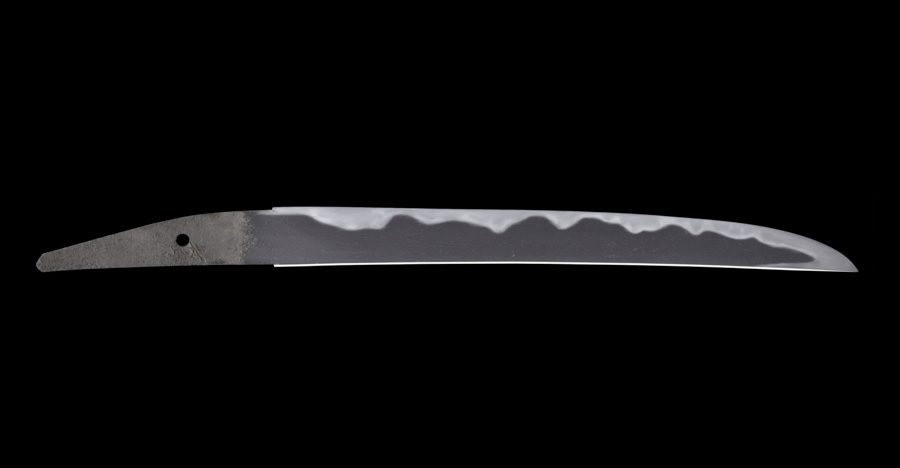
The term tanagobara means fish belly, though other sources translate it as grasshopper’s belly. The upper part of the tang features a bulge, which tapers gently into a narrow lower section. It was seen in blades of Heianjo Nagayoshi, the Muramasa school, and the Shitahara school during the Muromachi period.
Different Types of Nakagojiri

The butt end of the nakago is called nakagojiri, which reflects the characteristics of each swordmaking school. When the blade is shortened, the nakagojiri is usually copied from the original.
The ends of a Japanese sword tang can be finished in several different ways:
1. Kiri (Straight)
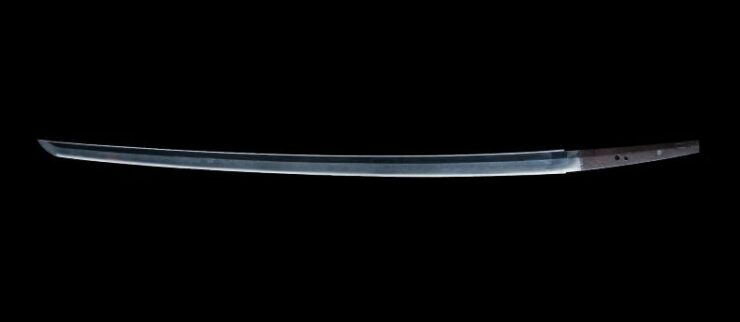
Kiri, also known as ichimonji, is characterized by an end that is cut off squarely in a straight line. It is often seen on shortened blades, and on swords of the Hosho school from the Kamakura period.
2. Kurijiri (Chestnut-Shaped)
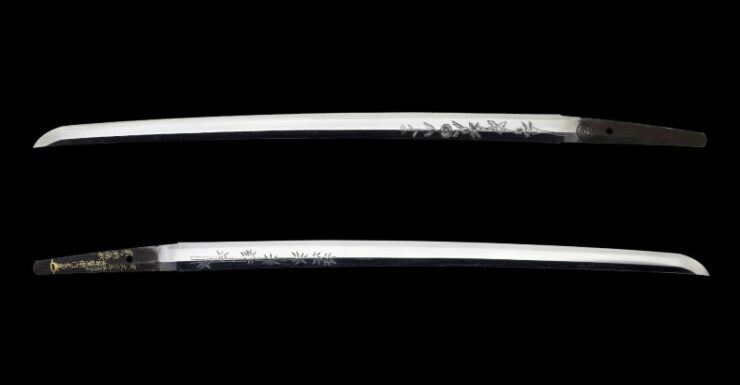
The kurijiri is a chestnut-shaped nakagojiri, with or without sharp corners. A kurijiri with a rounded end is the type most commonly seen in all periods. The wide variety is called kurijiri-hari, meaning expanded tang tail.
3. Ha Agari Kurijiri
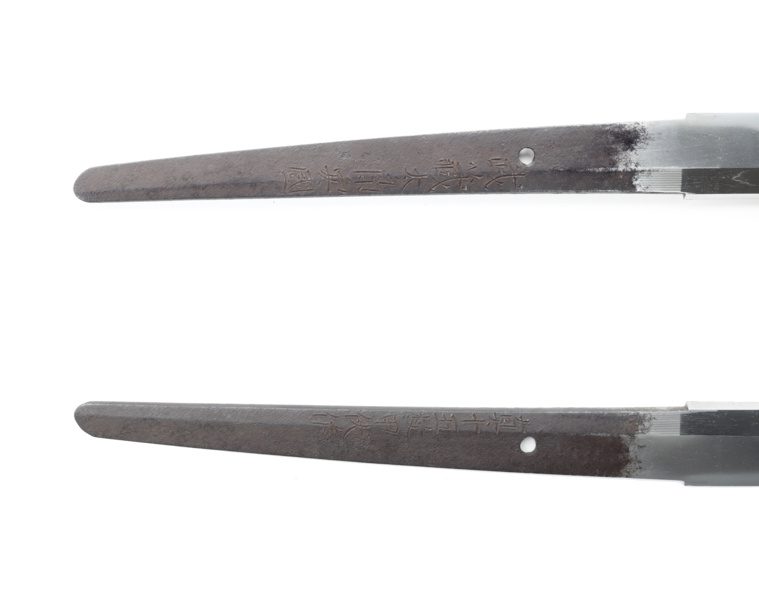
The ha agari kurijiri has a rounded end similar to the kurijiri. However, its cutting-edge side slants steeper than the mune (back) side.
4. Kengyo-jiri (Symmetrical V-Shape)
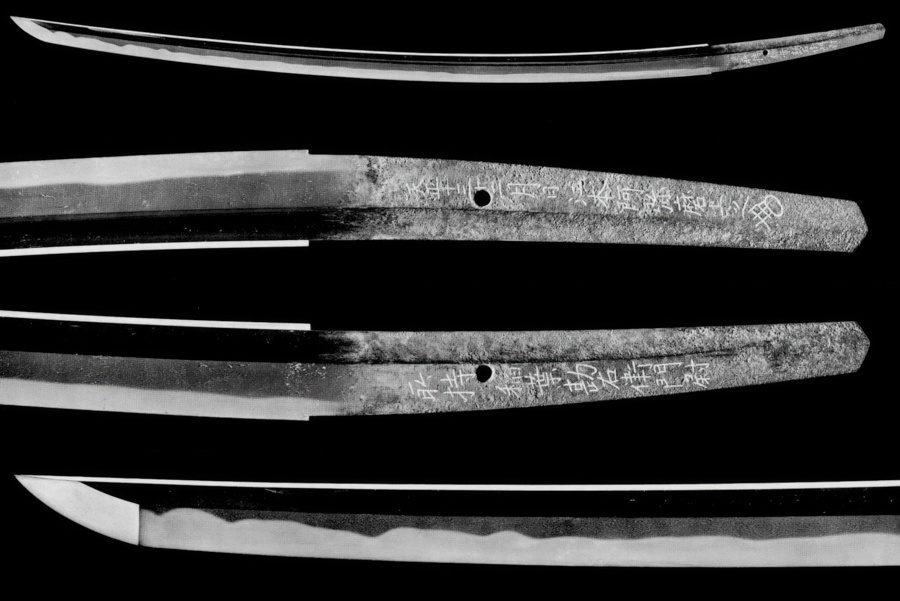
The kengyo-jiri has a sword-shaped end, featuring a V-shape with the nakago ridge at the center. Both lines of the bottom are straight, forming the pointed end. This nakago-jiri type is seen on Masamune blades, swords of Soshu tradition, and Shinto-era swords produced in the Soshu style.
5. Iriyamagata-jiri (Asymmetrical V-Shape)
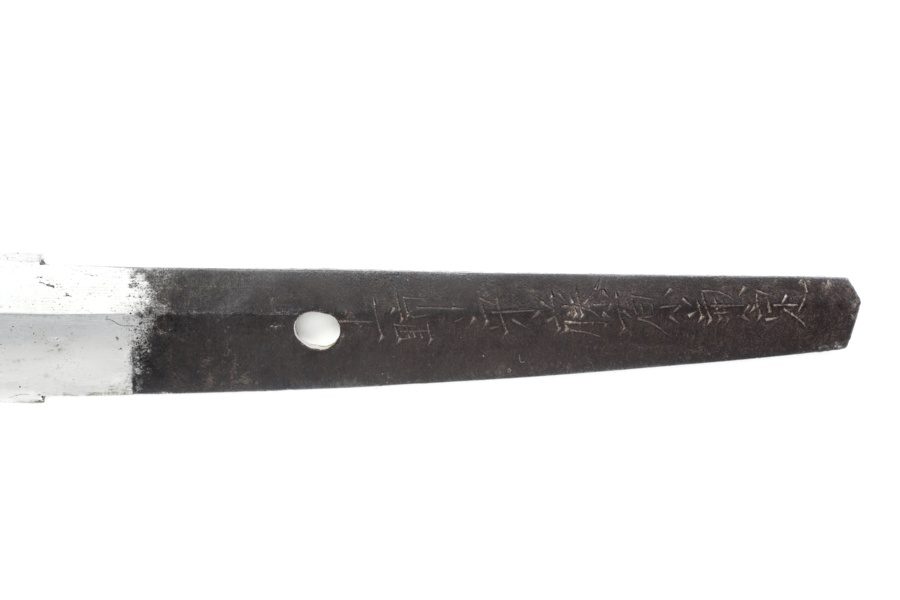
The iriyamagata-jiri features a V-shaped end, but the cutting-edge side is longer than the back (mune) side. It is similar to ha-agari kurijiri, but its two edges are linear and not bulbous. The edge side of the nakago has an acute angle bottom, while the other side has a slight upward angle to the back (mune) side. It is seen on swords produced from Yamato province schools, the Hokurikudo, and Shinto swords.
6. Kashū
The kashu is a variant of the iriyamagata-jiri, with a very steep or acute-angled cutting-edge side and almost straight on the back (mune) side. It is commonly seen on blades from Kaga (Kashu) swordsmiths, thus the name.
However, in reference to non-Kaga or non-koto-era blades, the term katasogi-nakago, meaning half-removed tang, is used. It is the more appropriate term when describing some blades of Yamato Shikkake school.
